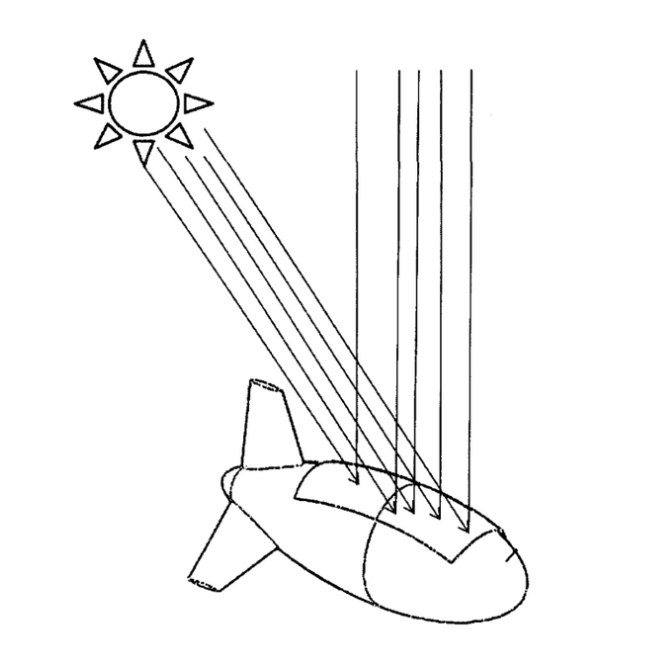This invention is a novel lighter-than-air platform (LTAP) optimized for solar power generation. The system incorporates aerostats to elevate the platform, which is equipped with solar photovoltaic (PV) modules. These modules harness solar energy to power onboard instruments, with surplus power transmitted to the ground via Power over Ethernet (PoE) cables. The LTAP is designed to ensure dynamic stability, optimized power output, and effective remote sensing capabilities over large areas, making it a viable alternative power source for remote and inaccessible regions.
Existing aerostat-based power generation systems face significant challenges in terms of dynamic stability, structural optimization, and efficient power transmission. Current designs often suffer from issues related to wind-induced instability, suboptimal power generation due to non-ideal solar panel orientation, and high transmission losses when transmitting power wirelessly to ground stations. These problems hinder the commercial viability and reliability of such systems for continuous operation in remote areas.
- Aerodynamically stable design: The platform is designed to maintain stability in varying wind conditions, ensuring consistent operation.
- Dual-body configuration: The two-body SPLTAP configuration provides a larger active surface area for solar power generation compared to single-body designs.
- Zero contour layout: The platform's structure ensures a flat layout for the PV modules, optimizing solar energy absorption and maintaining a constant solar zenith angle.
- Functionally graded envelope fabric: This innovative material reduces the permeation of lifting gas, maintaining structural dimensions and stability over extended periods.
- Automated winches: These control the platform's stability and orientation, enhancing sun tracking capabilities and ensuring optimal power generation.
- Ground-based monitoring: Continuous monitoring through a sensor network allows for real-time adjustments and stability management.
NA
Theoretical concepts for this technology have been proven/validated through calculations/simulations.
1
The LTAP technology offers a sustainable and reliable power solution for remote areas, reducing dependency on traditional power sources. It enhances capabilities in remote sensing and communication, which can be critical for disaster management, environmental monitoring, and improving connectivity in underserved regions.
- Remote Sensing: Enhanced hyper-spectral remote sensing capabilities over large areas with improved resolution and accuracy.
- Communication: Serving as a high-altitude platform for communication technologies.
- Power Generation: Providing an alternative renewable energy power source for remote and inaccessible areas, supporting various remote applications.
- Aerospace and defense
- Environmental monitoring
Geography of IP
Type of IP
163/MUM/2014
398521

